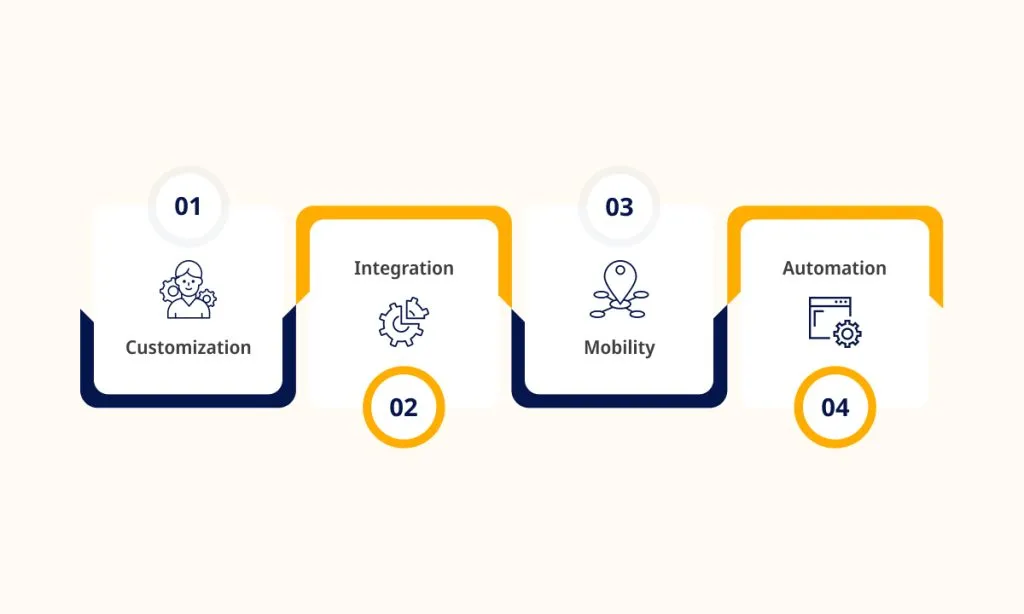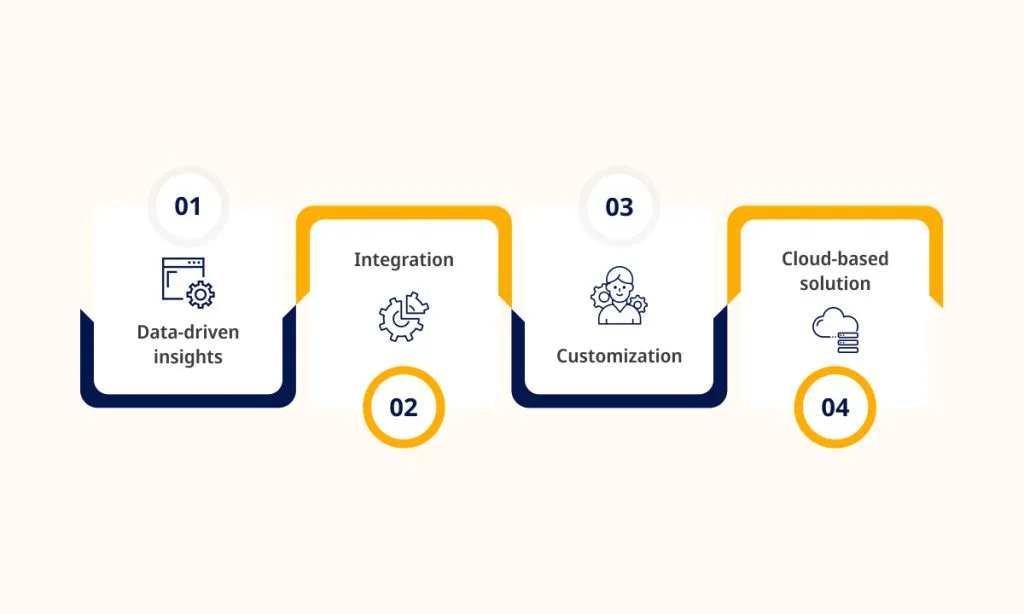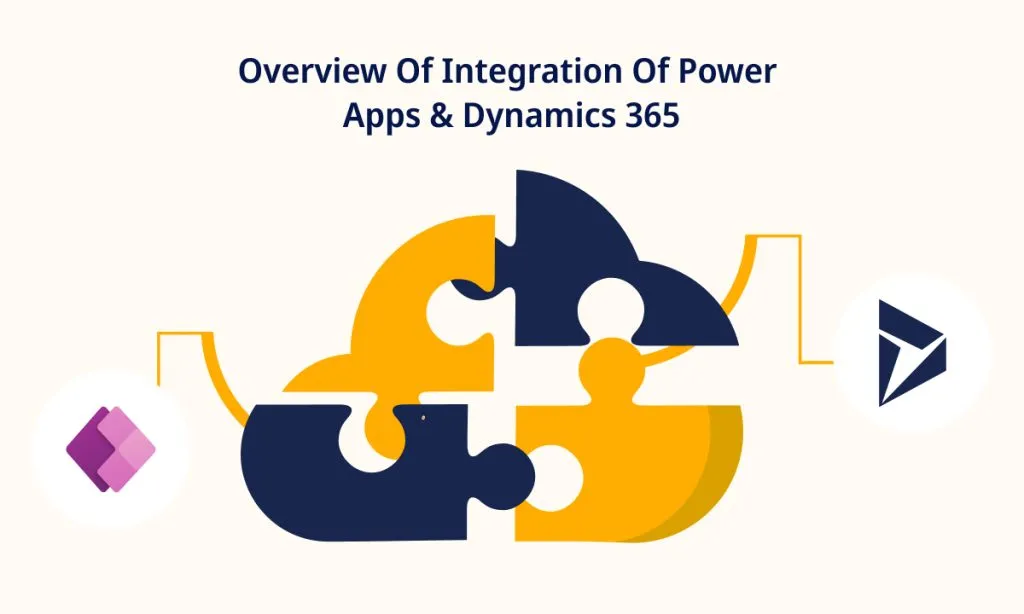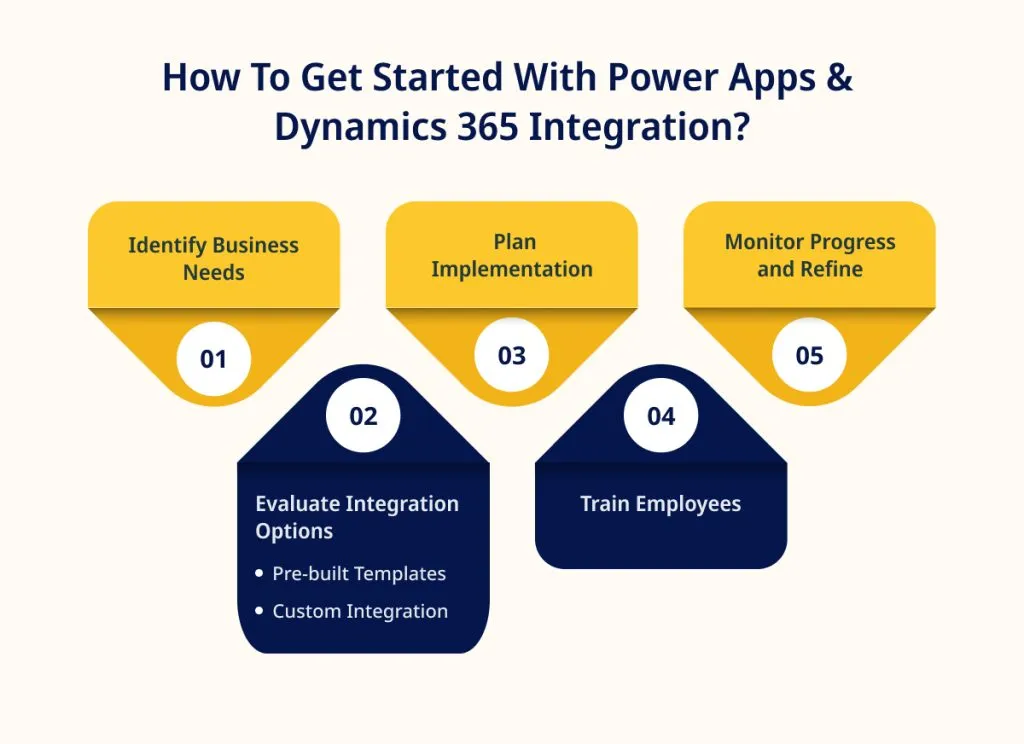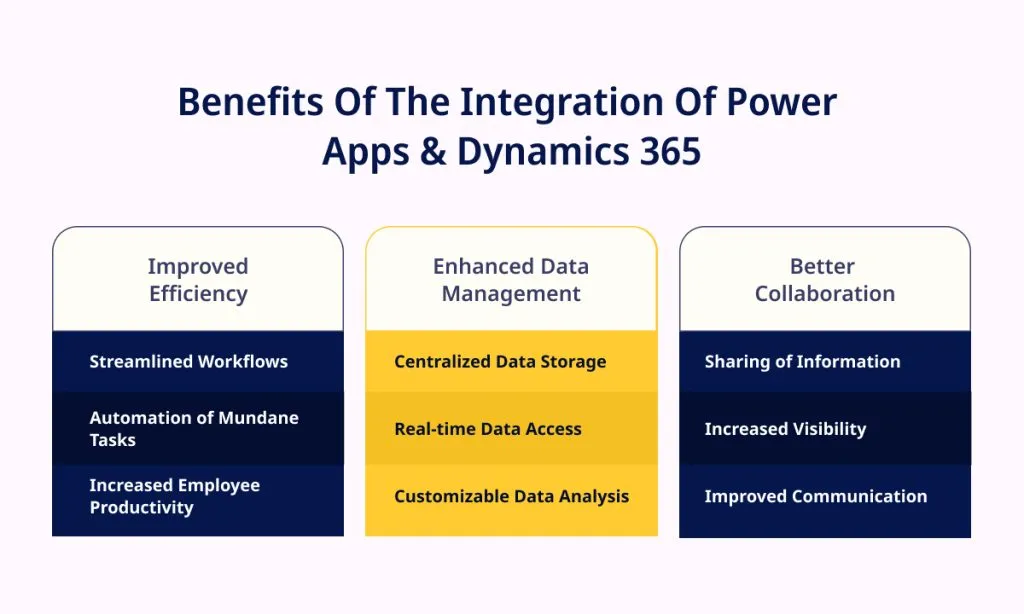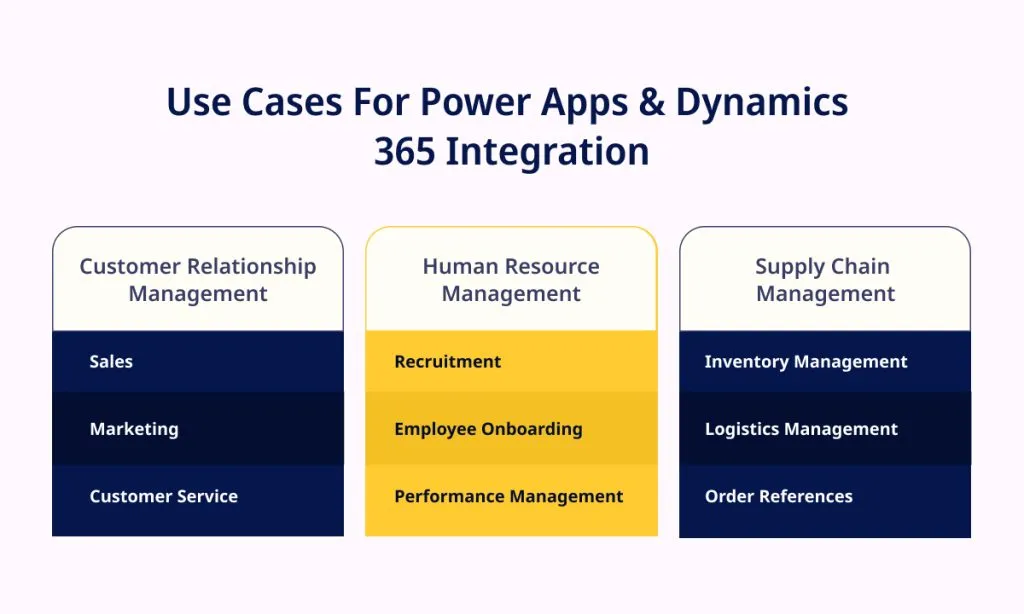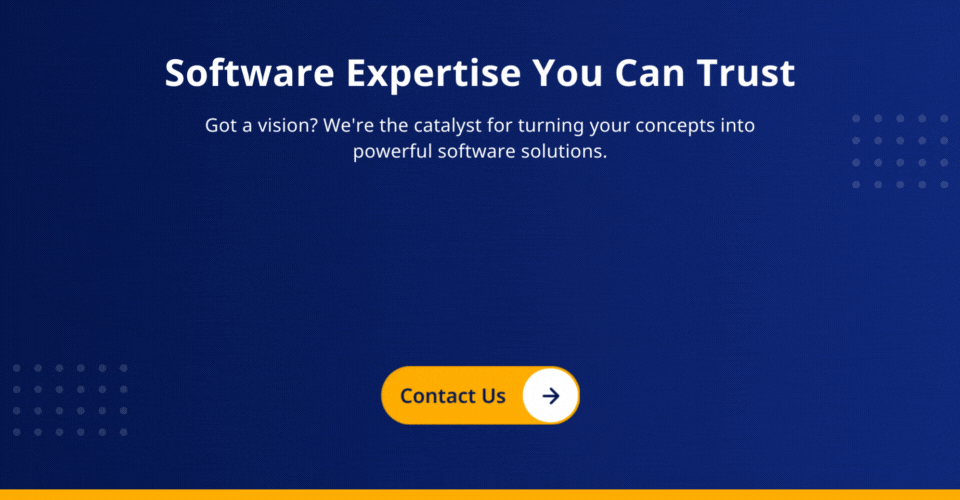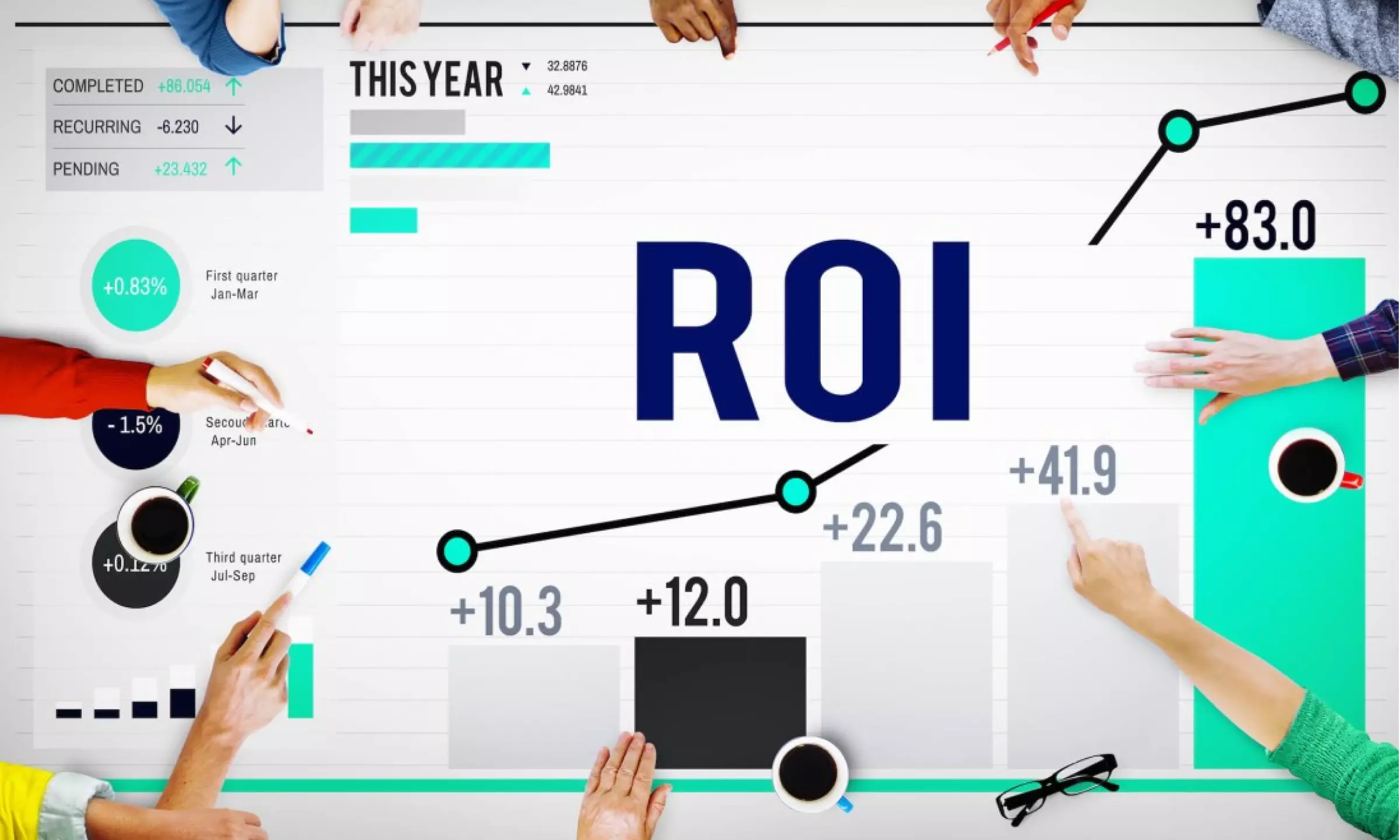Imagine a world where businesses effortlessly bridge the gap between powerful apps and seamless data management, productivity soars to new heights, and customer experiences are elevated to unparalleled levels.
This is the transformative power of integrating Power Apps and Dynamics 365 especially when guided by expert Microsoft Dynamics 365 Consulting. This blog will make you embark on a journey that will unravel the game-changing synergy between these two Microsoft powerhouses.
Whether you’re a forward-thinking business leader seeking innovation, an IT professional craving efficiency, or someone who values personalized customer experiences, get ready to witness cutting-edge app development and enterprise-grade solutions convergence.
Are you ready to unlock endless possibilities with Power Apps in MS Dynamics?
Let’s get started.
What Are Power Apps?
Microsoft Power Apps is a low-code/no-code platform that enables users to develop customized applications without requiring in-depth programming expertise. Boasting an intuitive user interface and numerous pre-created templates, Power Apps allows users to build apps that can be used on multiple gadgets, including smartphones, desktops, and web browsers.
Additionally, it connects with different data sources, like SharePoint, Microsoft Dynamics 365 Sales, and Excel, and incorporates artificial intelligence to streamline business processes and provide a great user experience. With Power Apps development, businesses can gain operational efficiencies, reduce manual workflows, and upgrade their operations, especially when integrated with Dynamics 365 Sales for enhanced CRM capabilities. Moreover, businesses can leverage Microsoft Power Automate to automate workflows across applications, further enhancing productivity and efficiency.
Explore the possibilities with Microsoft Power Apps
Benefits of Power Apps in Businesses:
Customization: Power Apps enable businesses to create personalized apps that satisfy their distinct necessities without elaborate programming know-how. This facilitates interactions to align their applications to their detailed processes and criteria.
Integration: Businesses can bridge their data sources by leveraging Power Apps. This includes Excel, SharePoint, and Dynamics 365 to improve workflows and amplify efficiency and productivity.
Mobility: Businesses can develop applications suitable for mobile by utilizing Power Apps. The apps can be accessed from various gadgets like phones and tablets. This equips customers to stay connected to the essential elements of their work even when away from the office.
Automation: Power Apps uses AI to streamline business operations, from data entry to approval management. This automation helps minimize human labor, improve data accuracy, and augment productivity.
Businesses can use Power Apps in MS Dynamics to revolutionize their operations and increase efficiency. The platform allows companies to customize applications and facilitates increased productivity, better workflow streamlining, and process automation.
Also Read: Comparing Giants: Microsoft Power Apps, Google App Maker, and Salesforce App Cloud
What is MS Dynamics 365?
Dynamics 365 is a cloud-based business management tool. It combines Enterprise Resource Planning (ERP) and Customer Relationship Management (CRM) functionality. It also enables streamlined business operations, equipped with data-driven analytics and reporting capabilities.
Furthermore, Dynamics 365 can integrate with other Microsoft applications, such as Power BI and Power Apps, resulting in an optimized experience for businesses in terms of cost-effectiveness, efficiency, and customer satisfaction.
Benefits of Dynamics 365:
Data-driven insights: Businesses can better understand their operations using Dynamics 365. They can identify where opportunities for optimization exist and maximize their profitability with data-driven decision-making. Advanced analytics and reporting capabilities enable them to get ahead of their competitors.
Integration: Dynamics 365 interconnects with other Microsoft applications, for example, Power BI and Power Apps, to supply a consolidated framework for regulating business procedures. This permits firms to make their operations more effective, diminish redundant labor, and optimize efficiency.
Customization: Dynamics 365 provides customizable solutions by empowering businesses to build software that meets their changing market needs and stays competitive.
Cloud-based solution: Dynamics 365 provides businesses with a cloud-based platform to increase their mobility and accessibility. It also enables teams to collaborate more effectively, respond more quickly, and become more agile.
Overall, Microsoft Dynamics 365 Customer Service offers businesses a complete toolset for transforming their operations by providing a solution for overseeing business activities, analyzing performance, and streamlining processes. You can also leverage the benefits of integrating Power Apps in MS Dynamics.
Discover the potential with Microsoft Dynamics 365
An Overview Of Integration Of Power Apps & Dynamics 365
Learn how Power Apps in MS Dynamics can be a game-changing solution for businesses that want to streamline operations and improve productivity.
- Fusing these two frameworks allows organizations to craft custom applications that can draw upon the data and capabilities from Dynamics 365, furnishing an integrated platform for managing business operations.
- The combination of Power Apps in MS Dynamics offers uninterrupted data transfer. It removes the need for tedious manual data entry and the probability of errors. As a result, companies can enhance their workflows, improve effectiveness, and guarantee accuracy.
- Dynamics 365 integration with Power Apps grants businesses access to powerful analytics and reporting tools. This fusion enables them to glean invaluable insights about their performance and make data-driven decisions.
- By leveraging the combined capabilities of Power Apps in MS Dynamics, companies can build bespoke applications that optimize their operations, create a more user-friendly interface, and offer a comprehensive platform for managing their corporate processes.
- Power Apps and Dynamics 365 come together to provide a completely personalized solution for businesses that want to advance their operations and stay ahead of their competition. With the integration, they can make changes as the market fluctuates, staying agile and innovative.
How To Get Started With Power Apps & Dynamics 365 Integration?
Integrating Power Apps in MS Dynamics provides numerous benefits to all types of businesses. Here we have listed the significant steps to get started with the integration:
A. Identify Business Needs
Initially, pinpointing the exact corporate needs which the integration of both platforms can remedy is essential. This necessitates examining present-day operations, identifying problems, and discerning the areas where the integration will be the most fruitful.
B. Evaluate Integration Options
Two solutions exist for those looking to integrate Power Apps in MS Dynamics. Opting for a pre-built template offers a straightforward approach to begin integration, while custom integrations can provide more versatility and be configured to fulfill specific business requirements.
Pre-built Templates
Microsoft provides pre-built templates for integrating Power Apps and Dynamics 365. These templates are available in the Power Apps Studio and can be accessed through the Dynamics 365 connector. It can be customized to meet specific business needs.
Custom Integration
Developing a custom integration might be required for enterprises requiring in-depth solutions. This involves creating a custom connection to bind Power Apps and Dynamics 365, necessitating a grasp of the Power Apps environment and Dynamics 365 application programming interfaces.
C. Plan Implementation
Once the decision to integrate Power Apps in MS Dynamics is made, planning for the project’s execution must begin. This involves specifying the project’s boundaries, generating a schedule, apportioning resources, and noting possible risks.
D. Train Employees
Training and assistance are indispensable for staff members to be adept at using the integrated solution upon integration completion. Providing instruction and support will guarantee the successful use of the integrated system.
E. Monitor Progress and Refine
Finally, keeping a close eye on the integration’s development is paramount as it requires adaptation to maximize the integration. One must assess performance data, locate places to develop, and implement alterations.
In conclusion, integrating Power Apps in MS Dynamics is an advantage to all businesses. With these easy-to-follow steps, companies can get up and running with the integration and enjoy increased productivity, optimized processes, and intelligent data-driven decisions.
Go for seamless integration of Power Apps and Dynamics 365.
Benefits Of Integration Of Power Apps & Dynamics 365
Integrating Power Apps in MS Dynamics benefits businesses with varying needs. Here we have elaborated on the key benefits of the integration:
A. Improved Efficiency
Streamlined Workflows
Integrating Power Apps and Dynamics 365 enables businesses to streamline their workflows by automating repetitive tasks and reducing manual effort. This leads to increased efficiency and improved productivity.
Automation of Mundane Tasks
The time-consuming task of manual data entry and approvals can be automated by utilizing Power Apps in MS Dynamics. This way, personnel are freed from mundane labor and can devote their attention to more essential objectives.
Increased Employee Productivity
Integrating Power Apps and Dynamics 365 gives employees the tools to work more efficiently. This leads to increased productivity and improved job satisfaction.
B. Enhanced Data Management
Centralized Data Storage
Integrating Power Apps and Dynamics 365 provides businesses with a centralized data storage solution. This enables companies to manage their data more effectively and ensure consistency across all applications.
Real-time Data Access
The integration of Power Apps in MS Dynamics enables businesses to access real-time data across all applications. This provides businesses with the insights they need to make data-driven decisions.
Customizable Data Analysis
Integrating Power Apps and Dynamics 365 enables businesses to customize their data analysis. This allows companies to gain insights into their performance and identify areas for improvement.
C. Better Collaboration
Sharing of Information
Integrating Power Apps and Dynamics 365 enables businesses to share information across all applications. This leads to improved collaboration and better decision-making.
Increased Visibility
Integrating Power Apps in MS Dynamics gives businesses increased visibility into their operations. This enables companies to identify potential issues and take corrective action before they become more significant problems.
Improved Communication
Integrating Power Apps and Dynamics 365 enables businesses to improve communication across teams. This leads to better collaboration, improved efficiency, and increased productivity.
In summary, integrating Power Apps in MS Dynamics provides numerous business benefits. By leveraging the low-code/no-code capabilities of Power Apps and the comprehensive functionality of Dynamics 365, companies can streamline their operations, improve data management, enhance collaboration, and gain insights into their performance.
Also Read: Data-Driven Benefits Of Microsoft Power BI
Use Cases For Power Apps & Dynamics 365 Integration
Power Apps and Dynamics 365 can be integrated across various departments and functions within a business. Here we have listed the primary use cases for Power Apps in MS Dynamics integration:
A. Customer Relationship Management
Sales
The integration of Power Apps & Dynamics 365 is used to streamline the sales process among businesses. This includes lead management, opportunity tracking, and pipeline management.
Marketing
Power Apps helps collect and manage customer data, while Dynamics 365 is used for marketing automation. They enable businesses to create personalized marketing campaigns and improve customer engagement. Microsoft Dynamics 365 Marketing plays a pivotal role in enhancing customer engagement by offering powerful tools for lead nurturing, customer segmentation, and multichannel campaigns, ultimately boosting marketing effectiveness
Customer Service
The integration of Power Apps in MS Dynamics can be used to provide better customer service. This includes customer feedback management, case management, and customer issue tracking.
B. Human Resource Management
Recruitment
Power Apps can be used for recruitment management, including job postings, application tracking, and candidate screening. Dynamics 365 handles the task of onboarding new employees and managing employee data.
Our team of experts has developed an HR portal utilizing cutting-edge technologies such as Laravel, HTML, Angular, and PHP. This platform was designed to assist decision-makers in making effective decisions regarding Human Resource Management with ease.
Employee Onboarding
Dynamics 365 can be used for employee onboarding, including document management, training, and compliance.
Performance Management
Power Apps in MS Dynamics can also be used for performance management. It includes performance tracking, goal setting, and employee feedback.
Know how ValueCoders helped a recruitment firm simplify its process with HR Management Portal.
C. Supply Chain Management
Inventory Management
The integration of Power Apps and Dynamics 365 helps in inventory management, including inventory tracking, stock management, and order processing.
Logistics Management
Power Apps in MS Dynamics can be used for logistics management, including shipment tracking, route optimization, and freight management.
Order References
The integration of Power Apps and Dynamics 365 can be used for order references, including order tracking, delivery management, and payment processing.
In summary, the integration of Power Apps in MS Dynamics can be used across various departments and functions within a business. From customer relationship management to human resource management to supply chain management, companies can leverage the benefits of integration to streamline their operations and improve efficiency.
Conclusion
Power Apps has simplified the application development process for users of any technical ability by removing the need for complex coding skills. The potential of Power Apps in MS Dynamics enables businesses to build bespoke solutions designed for their needs, which results in a more efficient and informed workforce.
Hence, integrating Microsoft Power Apps and Dynamics 365 has undeniably emerged as a transformative force, revolutionizing how businesses streamline operations and boost productivity.
By seamlessly combining these two powerhouse platforms, organizations have unlocked a new realm of possibilities. You can contact a leading Business Intelligence & Analytics Solutions company like ValueCoders to know more.
ValueCoders has been providing Power BI Development Services since 2004. You can hire experts from the company who have successfully delivered 4200+ projects to date. For any queries, contact us today!


